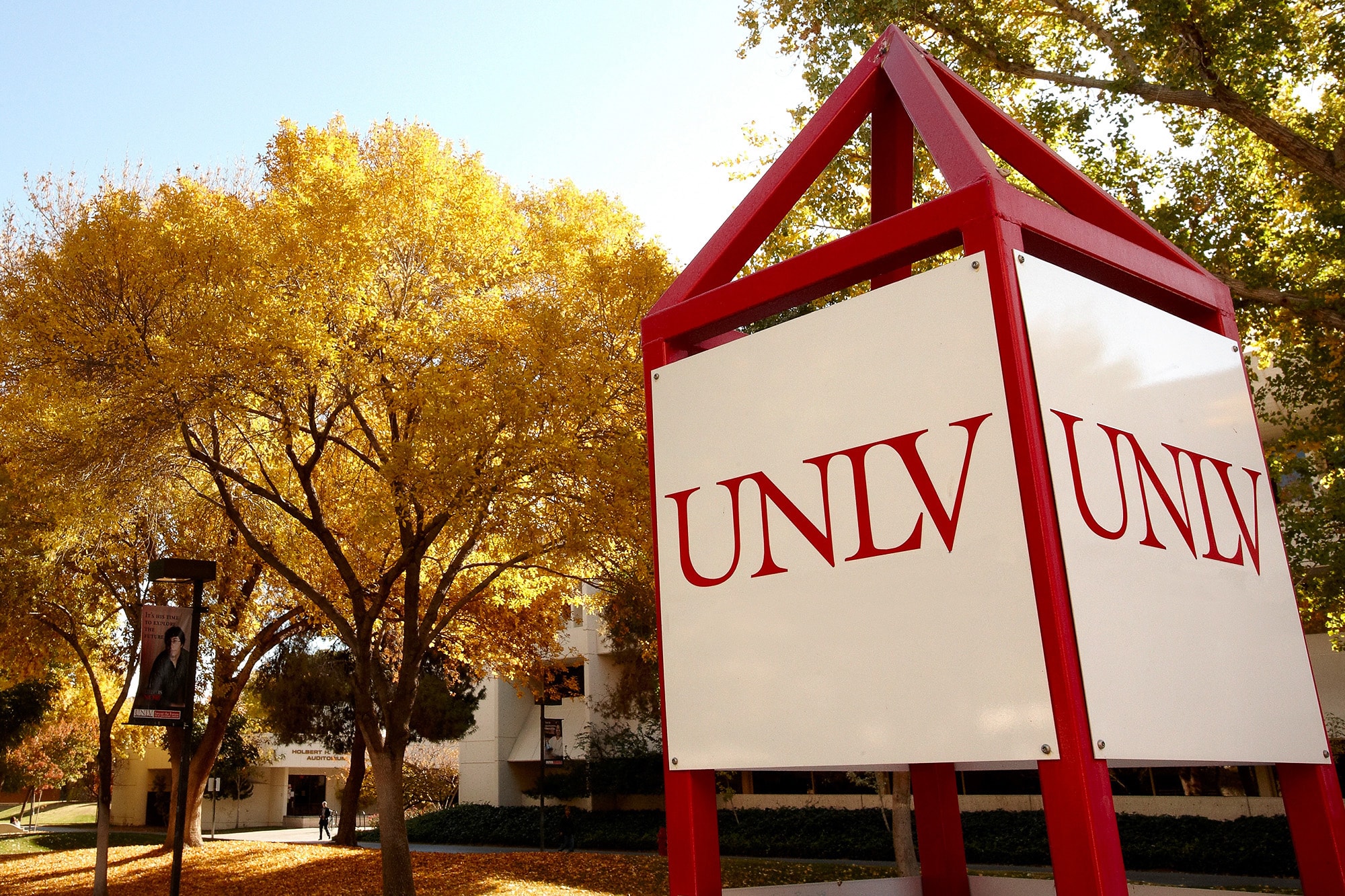The lobby of UNLV's Judy Bayley Theatre has been transformed into a miniature art gallery in which rotating exhibits will provide theater-goers with food for thought before shows and during intermissions.
A reception for the first exhibit, a display of watercolors by Los Angeles-based artist Gayle Garner Roski, is scheduled for 6-8 p.m. Dec. 3. Following the reception, those in attendance will be encouraged to stay to see the opening-night performance of the theatre department's production of "Cat on a Hot Tin Roof."
"A theater lobby is a natural place to display art," said art historian Robert Tracy, associate dean of UNLV's College of Fine Arts. "Not only does it provide space sufficient to display works of art, it also serves as transitional ground between the `real' world and the artistic offering theater patrons are about to see on stage.
"For 20 years a large painting by UNLV emeritus professor Rita Deanin Abbey has been the focal point of the lobby. We felt that it was time to have rotating exhibits take its place," he said. "Abbey fans need not worry, however. That painting is part of UNLV's permanent collection. It will be cleaned and eventually will be reinstalled in another venue."
"As for the Roski exhibit, I was pleased to be able to book it as the first display for our new gallery," Tracy said. "I think our theater patrons will find her work worth discussing."
For the UNLV exhibit Tracy has drawn from four bodies of Roski's work. The first is the "Highway Series" from 1998 in which she deals with varied scenes from the car. The artist says she believes these scenes "mirror life's views: past, present, and future."
The next grouping also is from this year and expresses the artist's fascination with the Mother Earth relationship that is evident between an artist and the medium when an artist works in clay. In this body of work, Roski evokes a kind of transformative power which sets up a spiritual relationship between the spectator and the art object, according to Tracy.
The third set, which will be displayed along the main wall of the Bayley lobby, consists of 17 images of simplistic harmonies and felt meanings found in the context of ribbons and ornaments. These works date from 1993. The artist has said of the ribbons, "I was always sensitive to the greatness of little things. My favorite painter is Georgia O'Keefe who could see heaven in a flower. The generosity of gift-giving, the child-like excitement of anticipation, rhyme with the sensuousness of the play of light on a satin ribbon, the feminine curves, the rich colors. I am trying to capture these impressions of harmony and turn them into affirmations of the beauty of life."
The final grouping, which is from 1996, will be Roski's visions of Mustang (pronounced Mootang), a 14th century feudal Tibetan Buddhist kingdom that was opened to the outside world in 1992. Roski visited the site.
"Until almost a year ago, Mustang had been the greatest challenge of my life," Roski said. "The trek was long and difficult, and I acquired altitude sickness. Three years ago I took on a new battle -- cancer. It was like hiking the mountains -- always struggling uphill and coming down to not know the ups and downs that may lay ahead. This series of paintings became my mantra, my therapy, and a metaphor of my cancer. I was able to feel my feelings and make the beast beautiful."
For additional information on the Roski exhibit or the reception, call Tracy at 895-4210.



